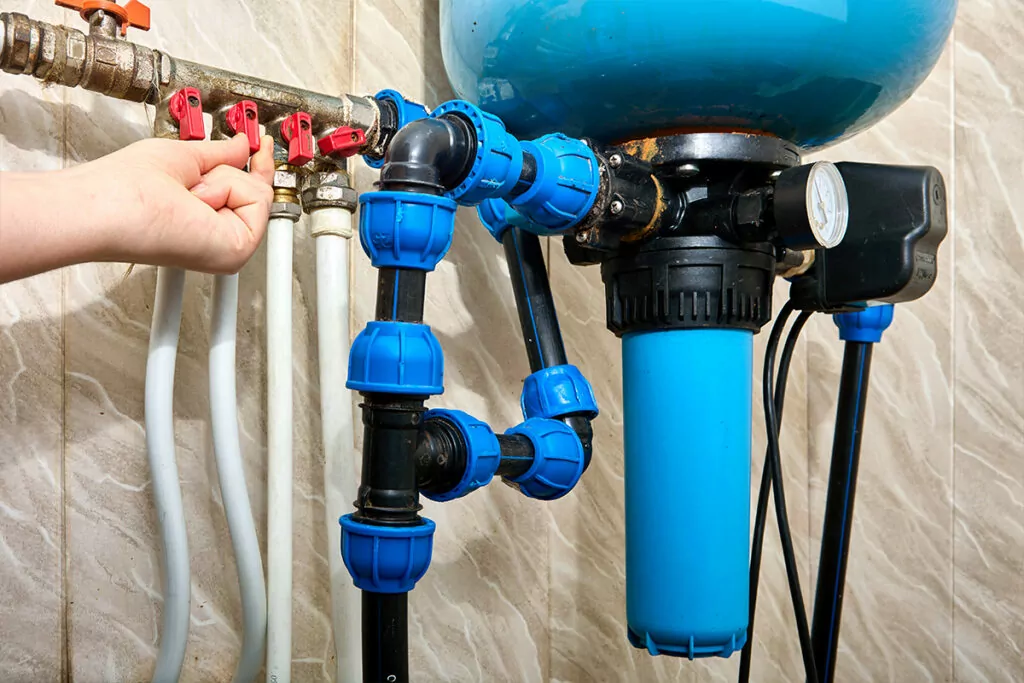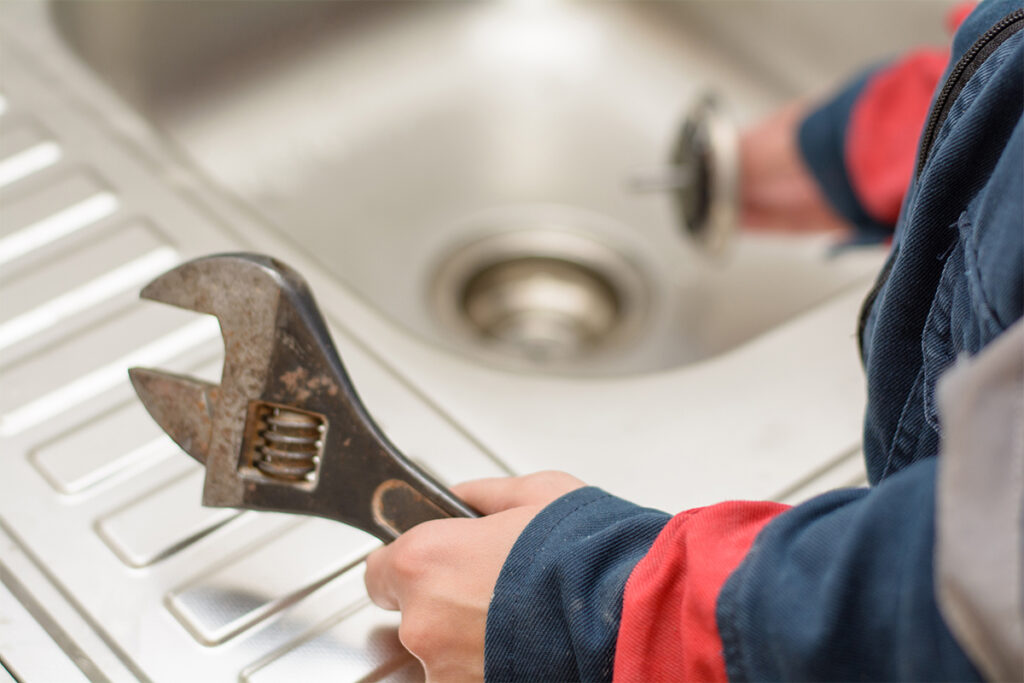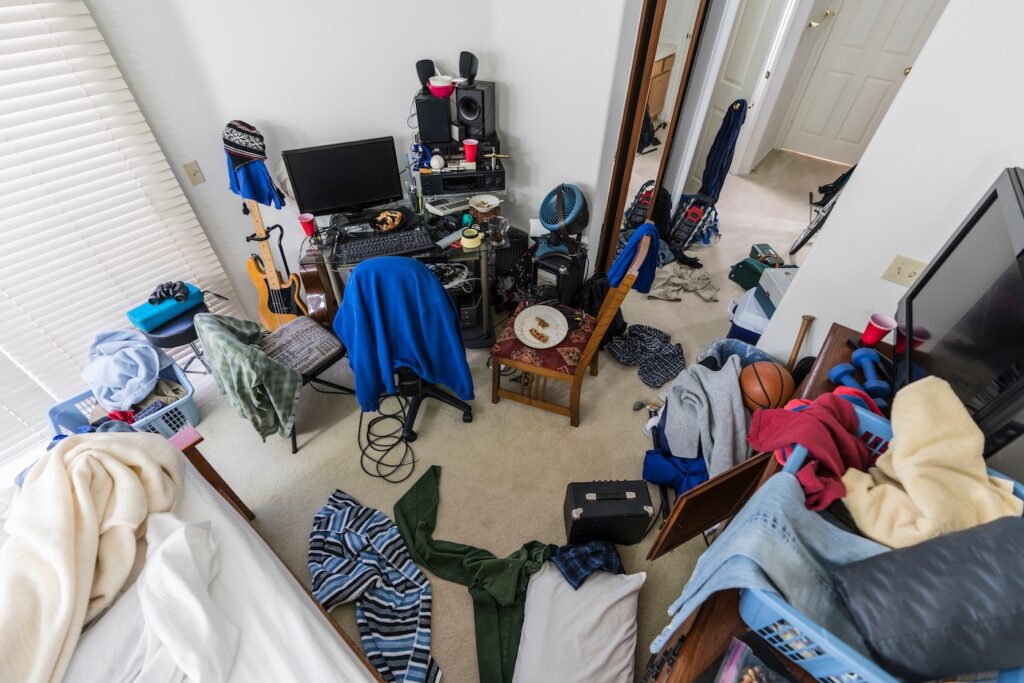A leaking kitchen faucet handle can be a frustrating problem that not only wastes water but also adds to your water bill. According to the US Environmental Protection Agency, a faucet leaking at a rate of one drip per second can waste over 3,000 gallons of water in a year. Fortunately, fixing a leaky faucet handle is a relatively straightforward task that you can tackle on your own. Follow these handy steps to identify the issue and learn how to fix a kitchen faucet leaking from the handle.

Why Do Faucet Handles Leak?
Faucet handles may leak due to a number of reasons, usually because of issues related to the internal parts:
Cartridge Issues
The cartridge inside the faucet handle can wear out over time, leading to leaks.
Buildup and Corrosion
Mineral deposits and corrosion can accumulate within the faucet handle, causing leaks.
Damaged Seals
Worn-out seals and gaskets can result in water seepage around the handle.
High Water Pressure
Excessively high water pressure can cause leaks at the handle.
Aging Hardware
Older faucets may experience leaks due to general wear and tear.
What You’ll Need to Fix Leaky Faucet Handles
On average, it may take around 30 minutes to an hour to fix a leaky faucet handle.
Before proceeding with the faucet repair, you’ll need to assess the situation by taking the sink apart to determine which parts need replacement. Make sure you have these tools in your handy toolbox before you get started!
- Adjustable wrench
- Phillips and flat-head screwdrivers
- Allen/hex wrench set
- Pliers
- Lubricant (such as silicone grease)

Also, here are the kitchen faucet supplies you might need along with an estimated cost:
Replacement Cartridge: If the issue lies with the cartridge, you may need to purchase a new one. Cartridges typically cost between $10 to $30, depending on the faucet model and brand.
Seals and Gaskets: Damaged seals and gaskets should be replaced to prevent further leaks. The cost of these components can range from $5 to $15.
O-rings: If your faucet has O-rings, check for wear and replace them as necessary. O-rings usually cost around $2 to $5.
Lubricant: To ensure smooth functioning, you’ll need a lubricant suitable for faucet components. A small tube of silicone grease is generally affordable, costing approximately $5 to $10.
The cost of fixing a leaky faucet handle can vary based on whether you choose to do it yourself or hire a professional plumber, which could cost anywhere from $100-$300, depending on the complexity of the issue and their rates.
Steps for Fixing a Leaky Faucet Handle
By preparing ahead of time and knowing what costs you might run up, you can confidently tackle the repair and kitchen faucet handle leak.

- Turn Off Water Supply: Shut off the water supply to the faucet by turning the water valves under the sink.
- Disassemble the Handle: Remove the decorative cap on the handle (if present) and use an Allen/hex wrench to take off the handle.
- Inspect the Cartridge: Examine the cartridge for any signs of damage or wear. If it’s faulty, replace it with a new one.
- Check Seals and Gaskets: Inspect the seals and gaskets for any cracks or deterioration. Replace them if needed.
- Clean Components: Remove mineral buildup and debris from the cartridge, handle, and other components using a mild cleaning solution.
- Lubricate Moving Parts: Apply silicone grease to the cartridge and other moving parts to ensure smooth operation.
- Reassemble the Faucet: Put the faucet handle back together.
- Turn on Water Supply: Turn the water supply back on and check for any leaks. If the leak continues, recheck the parts to make sure they’re properly installed.
How to Prevent Faucet Handles from Leaking
Prevention is key to avoiding future faucet handle leaks! Take these steps to avoid preventable problems:
Water Softener
Install a water softener if your area has hard water. Soft water reduces mineral buildup, which can extend the lifespan of faucets.
Regular Maintenance
Periodically inspect your faucet handles for any signs of wear and tear. Replace washers, O-rings, and seals as needed.
Regulate Water Pressure
Consider installing a pressure regulator to control water pressure, preventing excessive stress on faucet parts.

By following these steps and tips, you can fix a leaking kitchen faucet handle and ensure it operates smoothly, saving water and avoiding unnecessary expenses. Remember, regular maintenance and care can extend the life of your kitchen faucet and keep leaks at bay.














